Papers by Mario J . Roman
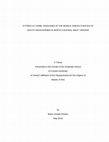
This study seeks to locate the identity negotiations of a group of South Asian women living in th... more This study seeks to locate the identity negotiations of a group of South Asian women living in the United States within the daily choices of their dress. The population consists of ten women, eight Indian and two Pakistani, ages 43 -65, who live in the North-Central region of West Virginia. These subjects are part of the post-1965 wave of South Asians immigrants to the United States; all of whom came between 1974 and 1992. The wave of South Asians who migrated to the U.S. after the Johnson Administration relaxed the immigration and naturalization policies has received scholarly scrutiny from the social sciences as to how this "model minority" has assimilated into the fabric of America. The extensive body of literature on the South Asian diaspora focuses on the individual and communal negotiations of the immigrants' identities. The research questions which frame this study are: How have these Indian and Pakistani women of this post-1965 generation of immigrants adapted their dress to America and West Virginia? Who are these women when they make dress choices? This research was inspired by fictional immigrant characters of diasporic literature who aspire to "fit in" to new settings where the climate and culture are new but who are mostly suck in traditional behavior and dress. Semi-structured interviews were conducted in individual and group settings to uncover how these women's relationships to their clothing inform their adaptive relationship with American culture and their

Eicher, Evenson and Lutz’s definition of dress from The Visible Self includes the five senses as ... more Eicher, Evenson and Lutz’s definition of dress from The Visible Self includes the five senses as an integral part of the clothed experience. The incorporation of hearing, seeing, smelling, tasting, and touching into our delineation of dress recognizes that the physical, social, cultural, and aesthetic aspects of clothes are not understood truly without apprehending the sensory experience. Dress and the senses have been confined mostly to reporting of the sensory features of apparel; however, viewing fashion through the senses is another mode of access into cultural, psychological, and social explorations. Researchers that move beyond embodiment and incorporate the sensed environment are exploring ‘emplacement’. Emplacement as defined by David Howes in The Empire of the Senses is, “The sensuous interrelationship of body-mind-environment. This environment is both physical and social, as is well illustrated by the bundle of sensory and social values contained in the feeling of ‘home’”. In many apparel studies of the South Asian diaspora, sensory narratives are not utilized as an element in the discussion of dress, fashion, migration, and identity. During my interviews with Indian and Pakistani immigrants about their dress choices, these conversations revealed that these women’s mental and emotional responses to their apparel were informed by unfamiliar sensory-dress experiences in their newly adopted environments. While clothes can reinforce one’s sense of place, some participants revealed that dress choices can elicit emplacement’s opposite, ‘displacement’, or feeling disconnected from one’s physical and social environment. Based on my research with South Asian immigrants, this paper will explore emplacement and displacement from sensory-dress narratives. Through conversations about dressing back home and in the diasporic world, these collected stories reveal that through a confluence of mind, body, and sensed environments these women fluctuated between inclusive and exclusive social spheres with the dressed personae they created.

Fashion media has leaped off of magazine pages and computer screens and into the palms of every t... more Fashion media has leaped off of magazine pages and computer screens and into the palms of every tech-savvy, on-the-go fashionista. Smartphone ‘apps’ (short for ‘applications’) change how both consumers and retailers interact with fashion products, media, and one another. Chanel’s app offers runway videos, Chanel news, and stories on designer Karl Lagerfeld. Hugo Boss’s app helps fans match items from their wardrobe with clothes currently in stores. The Gap’s StyleMixer app allows customers to create ‘looks’ with current in-store products, which can then be shared in a virtual forum. Inspired by Arjun Appadurai’s analysis of modernity and globalisation through ‘scapes’, this paper explores how these apps impact spatial and social dynamics on the ‘fashionscape,’ or the fluid and irregular landscape, which is shaped by fashion capital, people, and media. The shrinking of fashion’s virtual space between designer and consumer, and the social networking of consumers is constantly changing the terrain of the fashionscape where digital images, text communication, and the flow of fashion capital occur in the palm of our hands.
Book Reviews by Mario J . Roman
Journal Special Editions by Mario J . Roman
Co-edited Journal Special Edition on the theme of Fashion and Memory emanating from the 'Fashion ... more Co-edited Journal Special Edition on the theme of Fashion and Memory emanating from the 'Fashion and Re-collection' Symposium at LCF 2013.
Conferences Co-organised by Mario J . Roman

On 29 January 2013, the Fashion and Re-Collection postgraduate symposium was held at London Colle... more On 29 January 2013, the Fashion and Re-Collection postgraduate symposium was held at London College of Fashion, co-organised by Sara Chong Kwam, Morna Laing and Mario Roman. The symposium brought together a group of postgraduate scholars, with different approaches and vocabularies, to reflect on fashion through the lens of memory. Although presenters span a range of disciplinary backgrounds, running through the day was an emphasis on what can be remembered, or remembered differently, through fashion – in both academic and curatorial contexts. But alongside this, it is also worth thinking about what fashion wants to forget: whether it be side-lined histories and subjectivities, the conditions of production, landfill, or last season. Put differently, what does fashion – as object, image and text - seek to include and exclude? And what methodologies are appropriate for uncovering, or rather re-constructing, those memories? Keynote speakers were Professor Caroline Evans and Dr Linda Sandino.

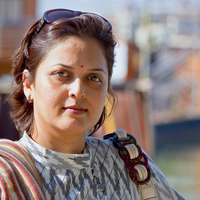
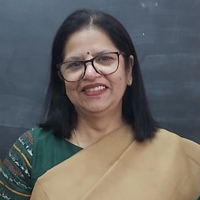
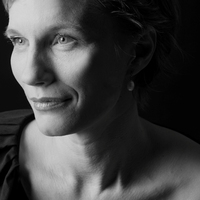

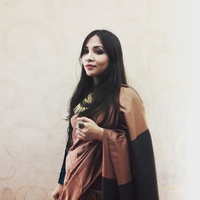


Uploads
Papers by Mario J . Roman
Book Reviews by Mario J . Roman
Journal Special Editions by Mario J . Roman
Conferences Co-organised by Mario J . Roman